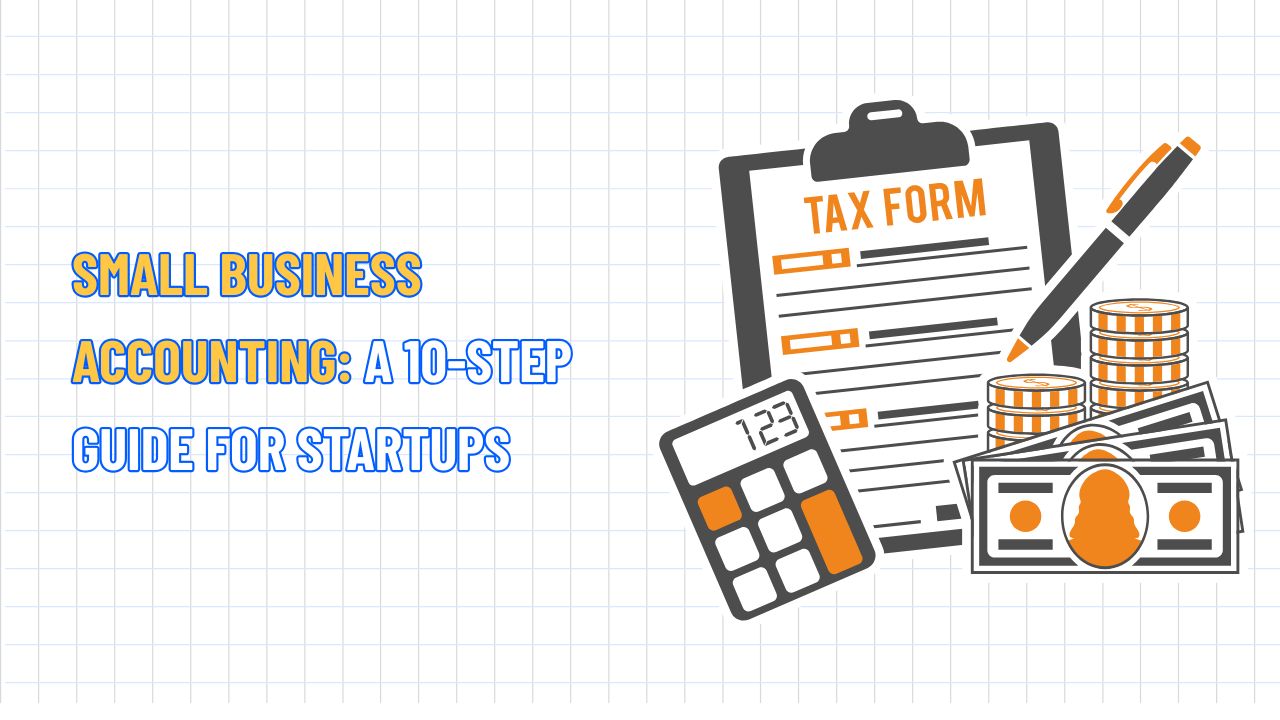How to Start a Subscription Business with Zero Experience
Table of Contents Hide
The subscription business model has transformed e-commerce, offering stable revenue and long-term customer relationships. If you’re an entrepreneur exploring how to start a subscription box business, this article from NextSky provides a detailed roadmap to ensure your business stands out in a competitive market.
What is a subscription business model?
A subscription business model involves customers paying a recurring fee to access products or services, typically monthly or annually. This model emphasizes convenience, personalized experiences, and long-term customer value, unlike one-time purchases. The subscription model offers unique advantages, especially for e-commerce entrepreneurs:
- Stable revenue: Subscriptions provide predictable income, enabling accurate sales forecasts and inventory planning, which is crucial for small businesses and startups managing cash flow.
- Increased customer loyalty: Regular interactions build stronger relationships. Industry studies show subscribers spend 67% more than one-time buyers as trust in your brand grows.
- Lower acquisition costs: Retaining subscribers is significantly cheaper than acquiring new customers, boosting CLTV and reducing reliance on constant marketing.
- Upselling opportunities: Subscriptions enable cross-selling or upselling complementary products, increasing revenue without extra acquisition costs.
- Data-driven insights: Ongoing customer interactions provide valuable data on preferences, allowing personalized offers and improved retention strategies.

How to start a subscription business
Launching a subscription box or service requires careful planning. Below is a detailed roadmap to guide you:
Step 1: Validate your subscription idea
To build a sustainable business, you must confirm whether your target market aligns with customer needs. Answer these key questions:
- Does your product or service offer ongoing value? For example, consumables like coffee or digital content like courses.
- Is there demand for recurring delivery or access? Use tools like Google Trends or surveys to gauge interest.
- Can you differentiate in a crowded market? For instance, a subscription box for eco-friendly pet products could stand out.
Pro tip: To test your idea, create a minimum viable product (MVP). For example, Shopify can be used to launch a trial subscription box and gather feedback.
Read more: How to Start a Business in 14 Simple Steps to Success
Step 2: Choose your subscription model
Explore these popular subscription models:
- Curation: Ideal for lifestyle or niche products, like artisanal snacks or rare indie books.
- Replenishment: Perfect for essentials like vitamins or pet food.
- Access: Suited for digital products or exclusive perks, such as premium webinars or in-depth resource libraries.
- Freemium: Attracts customers with free access, then upsells premium features for revenue.
- Usage-based: Offers flexibility for services like SaaS or utilities, where customers pay only for what they use.
- Community: Builds loyalty through exclusive membership spaces where customers feel special.
- Hybrid: Combines recurring subscriptions with one-time purchase options to meet diverse needs. Research competitors to identify market gaps. For example, if meal kits are saturated, try a unique angle like vegan baking kits to attract a specific audience.

Step 3: Create a business plan
- Value proposition: Your subscription offers convenience and exclusivity, saves time, provides priority products/services, and delivers superior experiences unavailable elsewhere.
- Target audience: Focus on a specific demographic with clear interests. Understanding their behavior, habits, and desires helps tailor the perfect subscription package.
-
Pricing strategy: Balance affordability and profitability with flexible pricing tiers:
- Basic plan: Accessible and appealing to a broad audience.
- Premium plan: Adds exclusive perks and enhanced services.
- Financial forecast: Build a model based on Customer Acquisition Cost (CAC), Customer Lifetime Value (CLTV), and churn rate. Aim for a CLTV-to-CAC ratio of 3:1, meaning each dollar spent on acquiring a customer generates at least three dollars in profit over their lifetime.
- Legal compliance: Adhere to regulations like the Restore Online Shoppers’ Confidence Act (ROSCA), ensuring transparent terms and a simple cancellation process.
Read more: How to Create a Successful Business Plan Template in 9 Steps
Step 4: Set up your e-commerce platform
A robust platform is critical for a successful subscription business. Shopify is optimal with its comprehensive ecosystem, simplifying management and growth.
- Seamless integration with apps like Shopify Subscriptions, Recharge, or Bold for enhanced functionality.
- Flexible recurring payment systems customizable for diverse customer groups.
- Detailed analytics are needed to track key metrics like monthly recurring revenue (MRR) and churn rate, optimizing growth strategies.

Read more: How to Start a Jewelry Business That Makes You Profit Every Day
Step 5: Source products and manage fulfillment
- Curation/replenishment: Partner with suppliers or create in-house products for a unique experience. For example, a coffee subscription could collaborate with local roasters to ensure quality and brand distinction.
- Access/freemium: Develop exclusive content or features that are hard to find elsewhere. Build a scalable, flexible system to handle growing subscriber numbers.
- Fulfillment: Timely delivery retains customers. Optimize with Shopify’s fulfillment network or third-party logistics (3PL) to save costs and enhance the customer experience.
Step 6: Price your subscription
Pricing isn’t just about setting a number—it must reflect the value you deliver, covering essential costs like products, shipping, and marketing. Depending on your model, consider these strategies:
- Tiered pricing: Offer basic, premium, or luxury plans to match customer needs and budgets, enhancing the shopping experience and broadening your audience.
- Long-term commitment discounts: Encourage loyalty with incentives, like a 10% discount for annual payments versus monthly, fostering stable revenue and retention.
- Freemium model: Provide a free trial with basic features, then upsell premium add-ons to attract new customers and maximize spending potential.
- Flexible pricing: Adjust prices based on customer feedback and market trends to stay competitive and responsive to consumer demands.
- Example: A subscription box could offer a $25/month basic plan and a $50/month premium plan with exclusive items, maximizing profits while providing value.
Step 7: Build your subscription website
Create a modern, user-friendly, mobile-optimized website using Shopify or similar platforms. Key elements for a seamless experience include:
- Simple signup process: Streamline registration with intuitive forms and easy navigation for a quick, hassle-free experience.
- Transparent policies: Clearly display payment, renewal, and cancellation details to build customer trust and confidence.
- Inspiring content: Use sharp visuals and emotional storytelling to convey the actual value of your subscription service.

Step 8: Market your subscription business
Clever marketing attracts and retains customers for your subscription box. Use these strategies for impact:
- Content marketing: Create blogs or videos about starting a subscription box or unique business ideas to build trust and drive organic traffic.
- Social media: To foster engagement, share behind-the-scenes content or customer testimonials on Instagram, TikTok, or Facebook.
- Email campaigns: Use tools like Shopify Email to nurture leads, maintain relationships, and reduce churn.
- Influencer partnerships: Collaborate with micro-influencers in your niche to amplify your brand to the right audience.
- Paid ads: Run campaigns on Google or social media to quickly reach and expand your market.
Step 9: Track key metrics
To build a sustainable business, monitor metrics that reflect performance:
- Monthly Recurring Revenue (MRR): Tracks stable revenue from subscribers, providing a foundation for cash flow forecasting.
- Churn rate: Keep churn below 5% with effective retention strategies, as loyal customers directly boost profits.
- Customer Lifetime Value (CLTV): Shows total revenue per customer, guiding resource allocation and maximizing value.
- Customer Acquisition Cost (CAC): Evaluates marketing efficiency. Keep CAC below CLTV for profitability.
- Average Revenue Per User (ARPU): Reflects profit per product/service plan, informing pricing strategy optimization. With Shopify Analytics, these metrics can be tracked in real-time to make informed decisions and drive continuous growth.
Step 10: Focus on retention and growth
- Personalize experiences: Use behavior and preference data to offer tailored promotions, like customized subscription boxes.
- Build a community: Create connection spaces via forums or social media groups to make customers feel part of something special.
- Loyalty programs: Reward long-term subscribers with perks, discounts, or exclusive benefits.
- Continuous feedback loop: Regularly survey customers to improve products and services. To scale, explore new markets, add product lines, or partner with complementary brands to deliver more value to existing and potential customers.
Best practices for subscription businesses
Once your business is running, maintaining and growing it sustainably is key. Below are methods to manage effectively and drive growth.
Managing your subscription business
- Simplify signup: Keep the process clear and concise to avoid losing potential customers.
- Listen to feedback: Collect input via surveys or reviews and use it to enhance services.
- Communicate clearly: Provide regular updates on changes to keep customers informed.
- Dedicated service: Resolve issues quickly and effectively to turn negative experiences into lasting loyalty.
- Easy cancellations: Offer a hassle-free process to build goodwill and encourage return customers.
Growing your subscription business
- Add new value: Introduce small products or services to maintain excitement and differentiation.
- Expand markets: Identify untapped customer segments for growth.
- Act on feedback: Implement changes based on input to show you value customer opinions.
- Encourage word-of-mouth: Create simple referral programs with incentives to spread your brand.
- Intelligent financial management: Monitor cash flow regularly to make informed pricing and investment decisions.
How to start a subscription business is not just a question for beginners, but also a strategy to build a sustainable e-commerce model. This helps companies to create a stable revenue stream, maintain long-term customer relationships, and optimize marketing costs.










